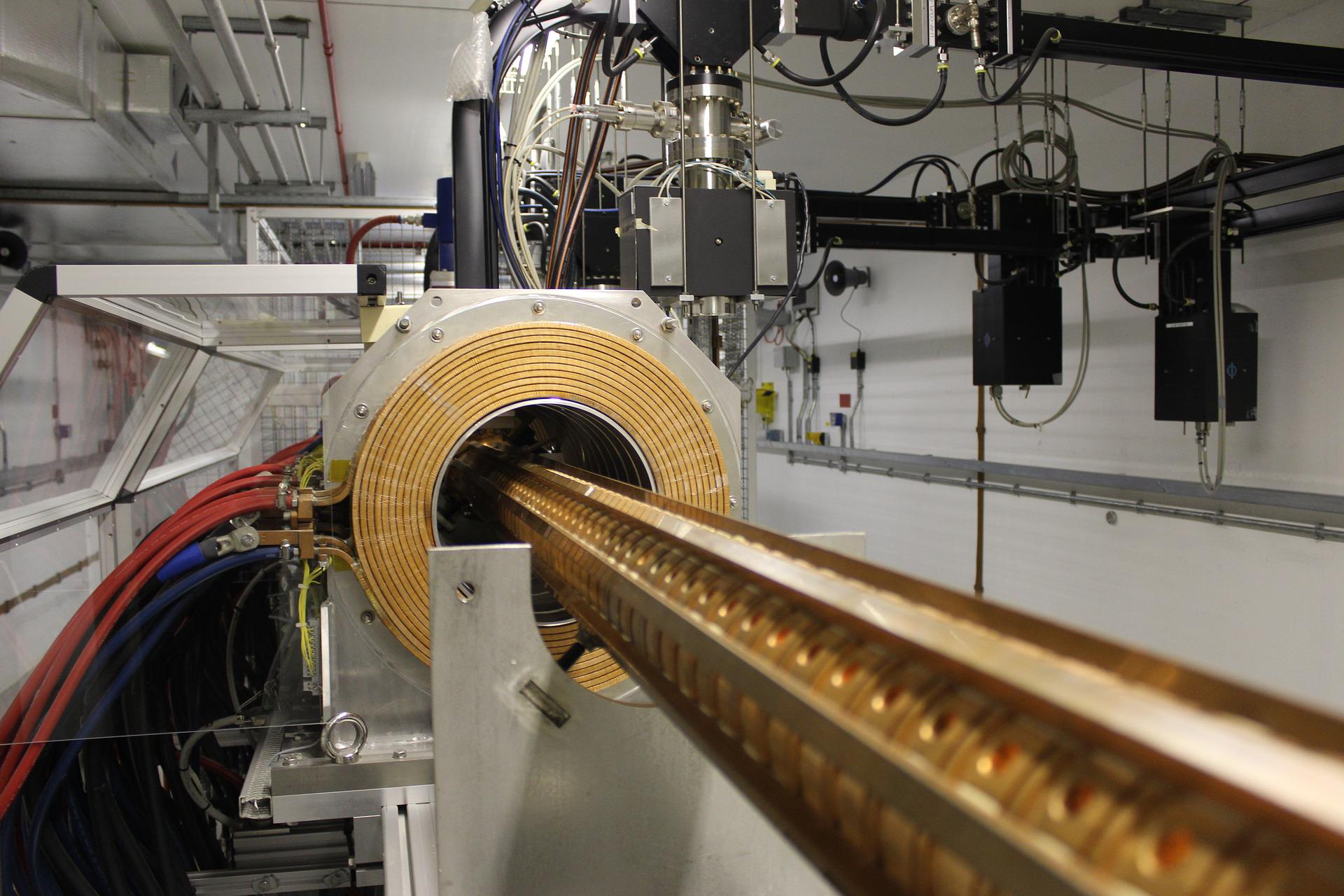Last Updated on: 22nd November 2023, 03:56 pm
Since its inception, the particle accelerator has been a vital piece of technology. In using energy to speed up the movement of particles, channelling them into a beam, this machine has impacted science, technology and everyday life enormously. Through harnessing subatomic energy, over the last century scientists have used this accelerator to research the origins of the universe, nuclear physics, as well as for X-rays, microwaves and TVs.
According to research from UCL, soon we may even have “mini-accelerators” that can “collide electrons and positrons at high speed to unearth new physics” on an even smaller scale.
However, to explain what exactly these important devices do, we’ll need to take a deeper dive into the world of particle physics. Soon enough, you’ll know exactly how these accelerators work, and even spot them in your home — just don’t touch anything!
What are particle accelerators?
Particle accelerators manipulate matter at a subatomic level, where we find the building blocks of atoms. Some examples of these are electrons, protons and neutrons, as you may remember from your physics classes way back when.
As physicist Michael Peskin explained to Knowable, in the early 20th century it was discovered that we can manipulate matter on a level “10,000 times smaller than an atomic nucleus” through influencing subatomic particles to travel at the speed of light, and collide with one another.
Taking charge
John Cockroft and Ernest Walton were the pioneers of this acceleration. In 1932, they invented a device capable of converting low voltage alternating current (AC) to high-voltage direct current (DC). This could generate enough power to create electromagnetic energy that could propel intensely charged particles at incredible speeds.
Their circular particle accelerator, aptly named the Cockroft-Walton Generator, produced a beam of charged particles, which could then be directed against and collide with other particles. As CERN clarifies: “the energy of the collision is transformed into matter in the form of new particles, the most massive of which existed in the early Universe”. While typically these targeted protons or electrons, since then scientists have used whole atomic particles from other elements such as gold or uranium.
How do particle accelerators work?
The basic particle accelerator is built through placing a particle source (called a proton) at opposing ends of an insulated, evacuated tube (keeping out obstructive air and dust). The polarity between these particles stimulates their movement, in the form of a beam travelling within the tube vacuum.
A powerful, high-precision current is supplied to the electromagnetic coils in this system that can then steer the beam.
While the Cockroft-Walton Generator used huge electrical currents to accelerate particles at a speed that could stimulate a nuclear reaction, in everyday use, this is done on a much smaller scale. In a TV, for example, these machines convert alternating current (AC) power at a lower charge, into a higher DC voltage using capacitors and diodes.
For these smaller particle accelerators (also known as cathode ray tubes or CRTs), DC power converters are necessary. These dedicated transformers change AC into DC with limited periodic variation (also known as ripple) of the electric power. They also help maintain current consistency over a long time. The standard capacity for these appliances, as XP Power explains, includes “output voltages up to 500 kVDC with output power ratings up to 200 kW”.
Why are particle accelerators important?
The United States EPA explains that particle accelerators can be used “to create radioactive material by shooting charged particles at atoms to change them into different, unstable atoms. The radioactive material produced can be used for research, medicine, or other applications”.
The application of these accelerators can also be found in various everyday objects, such as microwaves or televisions — for example, the CRT that generates the picture on a TV set we mentioned earlier. This also extends to other visuals, such as security screening in airports. In their medical application, accelerators are used to create radioisotopes for X-rays, and for radiation treatment through emitting beta rays and alpha particles to destroy cancer cells.
Infinite power
On the larger scale, perhaps the most notable particle accelerator ever created is the Large Hadron Collider. While you may recognise the name, you may be less familiar with what this actually does, even though it has prompted a whirlwind of speculation — some of which has been apprehensive to say the least.
Developed in a Swiss tunnel, the ambition of the collider is to use propulsion from voltage multipliers to stimulate particle acceleration at the same rate from which the Big Bang occurred — in search of the fundamental particle (Higgs Boson) that gives mass to other subatomic particles. While in theory this could also create a black hole, scientists have assured that this would only be on a quantum level and therefore, not threatening — unless you’re very small indeed.









